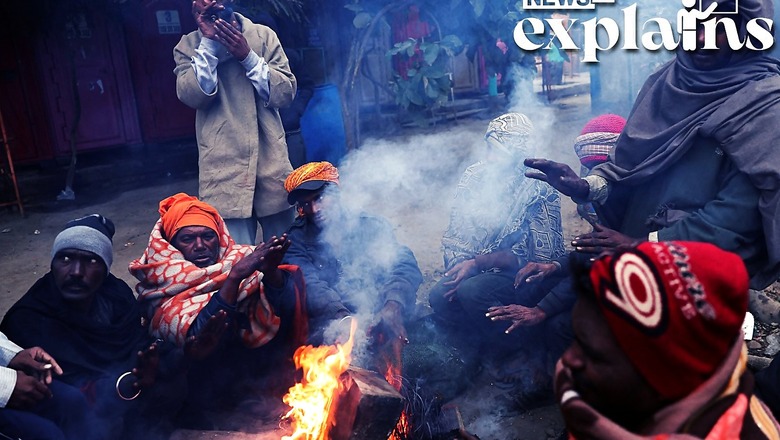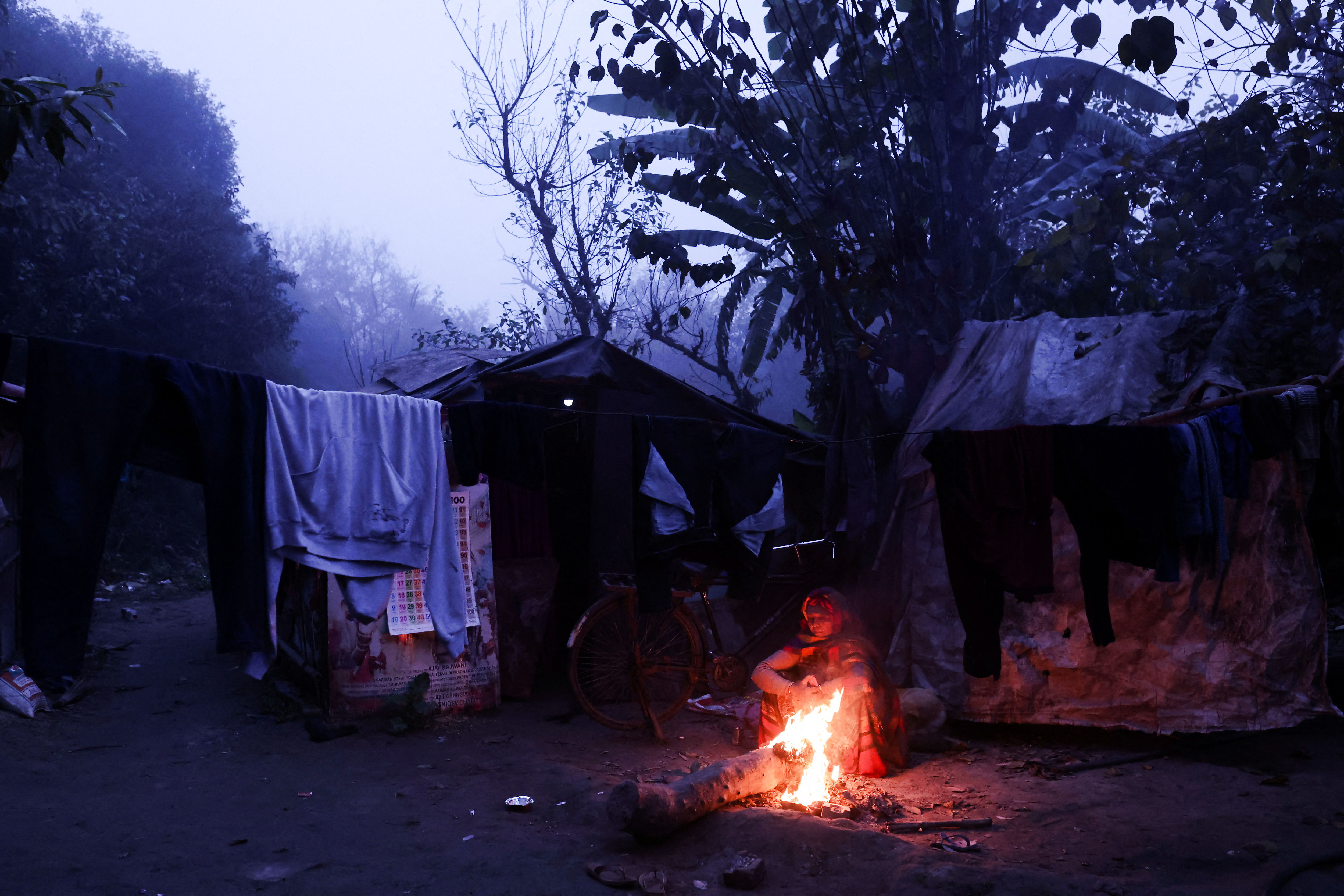
views
Frosty winds on Sunday whipped the plains of north and northwest India, lowering minimum temperatures to 3 to 5 degrees Celsius in many areas. It will become even colder before western disturbances provide some relief beginning Thursday.
Fatehpur in Rajasthan?s Sikar district recorded the lowest minimum temperature over the plains of northwest India, at minus 4.7 degrees Celsius. Faridkot, Punjab, shivered at minus one degree Celsius.
On Sunday, the Met Office reported cold wave to severe cold wave conditions in parts of Punjab, Rajasthan, Haryana, Delhi, and west Madhya Pradesh.
Minimum temperatures in many parts of northwest and southeast Rajasthan ranged from 1 to 3 degrees Celsius. Parts of Punjab, Haryana, Delhi, and southwest Uttar Pradesh recorded minimum temperatures in the 3 to 5 degree Celsius range, according to the report.

So, What is a Cold Wave?
A cold wave (also known as a cold snap, cold spell, or Arctic Snap in some areas) is a weather phenomenon characterised by a cooling of the air.
A cold wave, as defined by the United States National Weather Service, is a rapid drop in temperature over a 24-hour period that necessitates significantly increased protection for agriculture, industry, commerce, and social activities.
The precise criteria for a cold wave are the rate of temperature drop and the minimum temperature drop. The minimum temperature varies according to geographical region and time of year.

What Causes It?
A cold wave can be caused by a number of factors. Some of these, as listed in a Quint report:
Pressure differences: A ?prolonged area of relatively high atmospheric pressure? in the jet stream in northwest Asia, according to the National Disaster Management Agency, could cause a cold wave in India. Jet streams form because the Earth is unevenly heated, and pressure differences in different areas cause wind to blow from one to the other.
Cloud cover: A lack of cloud cover, or a lack of cloud cover, can cause a cold wave. Clouds trap infrared radiation from the Earth, and as cloud cover decreases, more heat escapes from the Earth?s surface, resulting in a cooler surface and lower temperatures.

This rise in cold surface water has a cooling effect. La Nina is expected to last from December to February 2023, according to the IMD.
Non-monsoon rainfall: Another major cause of cold waves is non-monsoon rainfall. The unpredictability of precipitation is only increasing as a result of climate change. This results in less monsoon rainfall (which benefits agriculture in India) and more off-season rainfall. One of the many consequences of this is an increase in cold waves during the winter months.
So, Which Factor is Causing the Cold Wave in North India?
According to RK Jenamani, scientist at IMD, one of the major factors contributing to colder-than-normal temperatures over north India this month is the large-scale fog cover.
“While westerly and northwesterly winds of around 5 to 10 kmph in the afternoon have also been contributing to the dip in temperature, an important factor this month is fog, which has been lasting for longer durations, preventing sunlight from reaching the surface and affecting the radiation balance. There is no heating in the day time, and then there is the impact of the night. Foggy or cloudy nights are usually associated with warmer nights, but if the fog remains for two or three days, cooling begins even at night,” he told Indian Express.
In the morning, light winds and high moisture near the land surface have contributed to the formation of a blanket of fog over large swaths of the Indo-Gangetic plains, the report says.
Because western disturbances have had little impact on the region, cold northwesterly winds have also contributed to the low temperatures. Storms from the Mediterranean region, known as western disturbances, are associated with a change in wind direction, bringing easterly winds to northwest India. Jenamani said the region last saw easterly winds on December 29.
When Will the Cold Wave Subside?
The weather bureau said minimum temperatures are likely to fall further by about 2 degrees Celsius over many parts of northwest and central India till January 17-18 and cold wave to severe cold wave conditions are very likely over many parts of Rajasthan, Punjab and Haryana, and Delhi during this period.
?Ground Frost likely at isolated places over Himachal Pradesh, Punjab, Haryana and Rajasthan from January 16 to 18,? it said.
Pahalgam in Anantnag district registered a low of minus 10.9 degrees Celsius ? down five degrees Celsius from a night earlier.
It was the coldest recorded place in Jammu and Kashmir.
The IMD said minimum temperatures will gradually rise by 3 to 5 degrees Celsius from January 18 to January 20 under the influence of a western disturbance.
When a western disturbance ? a weather system characterised by warm moist winds from the Middle East ? approaches a region, the wind direction changes. The chilly northwesterly winds from the mountains stop blowing, leading to an increase in temperatures.
What is a Western Disturbance?
A western disturbance is an extratropical storm that forms in the Mediterranean region and brings heavy winter rain to the northern Indian subcontinent, extending as far east as northern Bangladesh and south-eastern Nepal.
The westerlies are driving a non-monsoonal precipitation pattern. The moisture in these storms typically originates over the Mediterranean, Caspian, and Black Seas. Extratropical storms are a global phenomenon that carry moisture in the upper atmosphere, as opposed to tropical storms, which carry moisture in the lower atmosphere.
When a storm system encounters the Himalayas, moisture is sometimes shed as rain on the Indian subcontinent. During the winter, western disturbances become more frequent and stronger.
With inputs from PTI
Read all the Latest Explainers here




















Comments
0 comment